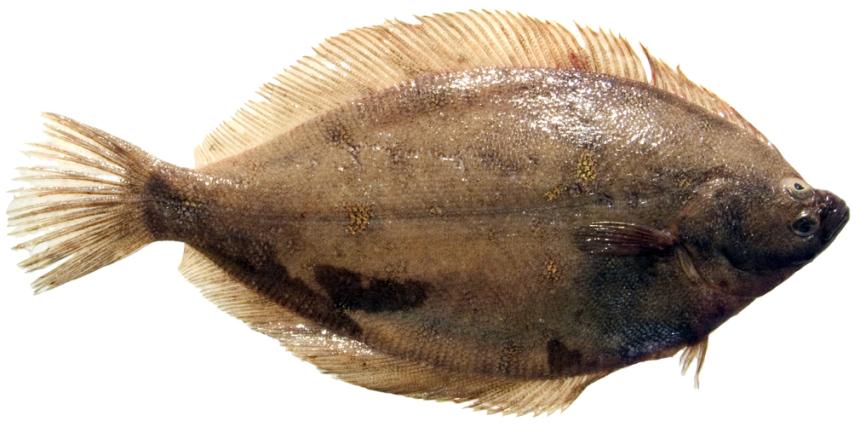Occasionally caught off the Washington coast by commercial harvesters using otter-trawls. Occasionally caught by recreational harvesters in the South and Central Puget Sound regions.
Description and Range
Physical description
This sole is right-eyed with an oval body shape. The eyed side is light to dark brown, or grayish brown with yellow or green mottling with rough scales that extend onto the fin rays. The blind side is white. The dorsal and anal fin edges are typically bright yellow. The caudal fin is rounded to a broad ‘V’ shape. The lateral line has a low arch over the pectoral fin with a long accessory dorsal branch that extends past the gill cover. Butter sole have a small mouth with blunt teeth; the strongest teeth are on the blind side. Their eyes are small with a flat narrow space between them. This species has a strong anal spine.
Butter sole are easily confused with Northern and Southern rock sole, which have a higher arch in the lateral line and a shorter accessory dorsal branch.
Butter sole can grow up to 55 cm (22 in) in length, with an average length of about 20.3 cm (8 in). Maximum age is up to 11 years old.
Geographic range
Butter sole range from the southern Bering Sea and Aleutian Islands in the north to Ventura, southern California in the south. They are typically found on muddy or silty bottoms from 0 to 425 m (0-1,395 ft) and most abundant shallower than 91 m (300 ft).
